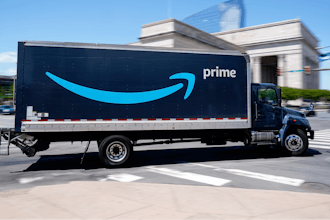
The WBSRocks e-commerce roundtable features industry experts sharing their perspectives on issues critical to the manufacturers' e-commerce journey. In this issue, we ask: how to track visitors' sessions effectively to increase the conversion rate.
E-commerce requires you to have a deep understanding of your KPIs and funnel, but there are nuances to these KPIs. In fact, doing this once may not be enough as your customer behavior is likely to change over time. There are several KPIs that play a role. But one of the most important is the number of sessions from your visitors and how they are correlated with the conversion rate. Mastering the sessions will help you better command your KPIs, which will result in higher sales from your digital channels.
Sam Gupta, Principal Consultant, ElevatIQ
In the traditional setting, you might be familiar with visitors walking to your store and not buying anything. They might do it a couple of times before they can make up their mind and finally purchase from you. Similarly, in the e-commerce setting, it is important to track visitor growth and their conversion over the period of time. But since some of these visits could be from the same potential buyer, you need to distinguish between the new vs. repeat visitors.
While there are ways to identify the sessions from repeat visitors, it might be harder than you might feel due to the technical limitations in tracking them. For example, traditionally, browsers placed a cookie in their memory to identify a visitor session. A cookie is a piece of information that helps browsers correlate visitors with an URL. While cookies are great, there are limitations. For instance, if visitors end up switching their browser, you might have two completely different sessions from the same visitor, and your analytics may be off. Also, just like your traditional sales cycle, it's very important to set the optimum time limit before you identify that session as a new sale from the repeat customer as it's hard for browsers to distinguish between new vs. repeat customers as they don't store your order or credit card information in their memory.
While there are nuances to the session tracking, you can master it if you spend enough time understanding your traffic or work with an expert. They help you overcome these issues and help you design the funnel and KPIs that you need to identify your visit to sessions to conversion ratio.
Kristina Harrington, President, GenAlpha
Sessions can be a valuable metric in understanding user behavior on your site over a period of time. Typically triggered by the opening of a page, a session records the length and frequency of time users spend on your website.
We find it common for manufacturers to look at sessions in blocks of time. For example, last quarter, there may have been 1000 recorded sessions, and this quarter, there are 1500 sessions; therefore, sessions increased 50%. Sudden increases or sudden drops in conversions can be a valuable signal which gives you an opportunity to ask deeper questions and gain better insights. Questions like, what caused sessions to grow? When sessions grew, did conversions grow as well? Answer to these questions is where you will typically find the valuable areas for iterative improvements on your site.
The important thing is to determine what your goals are when users come to your site. If your goal is to increase conversions, you will want to analyze sessions with product views, sessions with shopping carts, and sessions with transactions. It's also important to look at these sessions across browsers. Developers, product managers, and marketers can then use the insights gained from the analysis to improve site performance, generate more traffic, improve customer experience and ultimately drive more conversions.
Eric Landmann, E-commerce Division Manager, Earthling Interactive
On some platforms, you can control the length of the session. For example, if you know your user has a 3- or 4-day purchase interaction, you can control the length of the session, so they are not logged out and appear in analytics as one person coming back to the site several times.
However, if you have a short session, you could have the same user showing up as three sessions when really it is the same person visiting three times. This can affect your understanding of conversions.
So it's important to have a deeper understanding of your session KPIs and how that will affect your other dependent KPIs.























